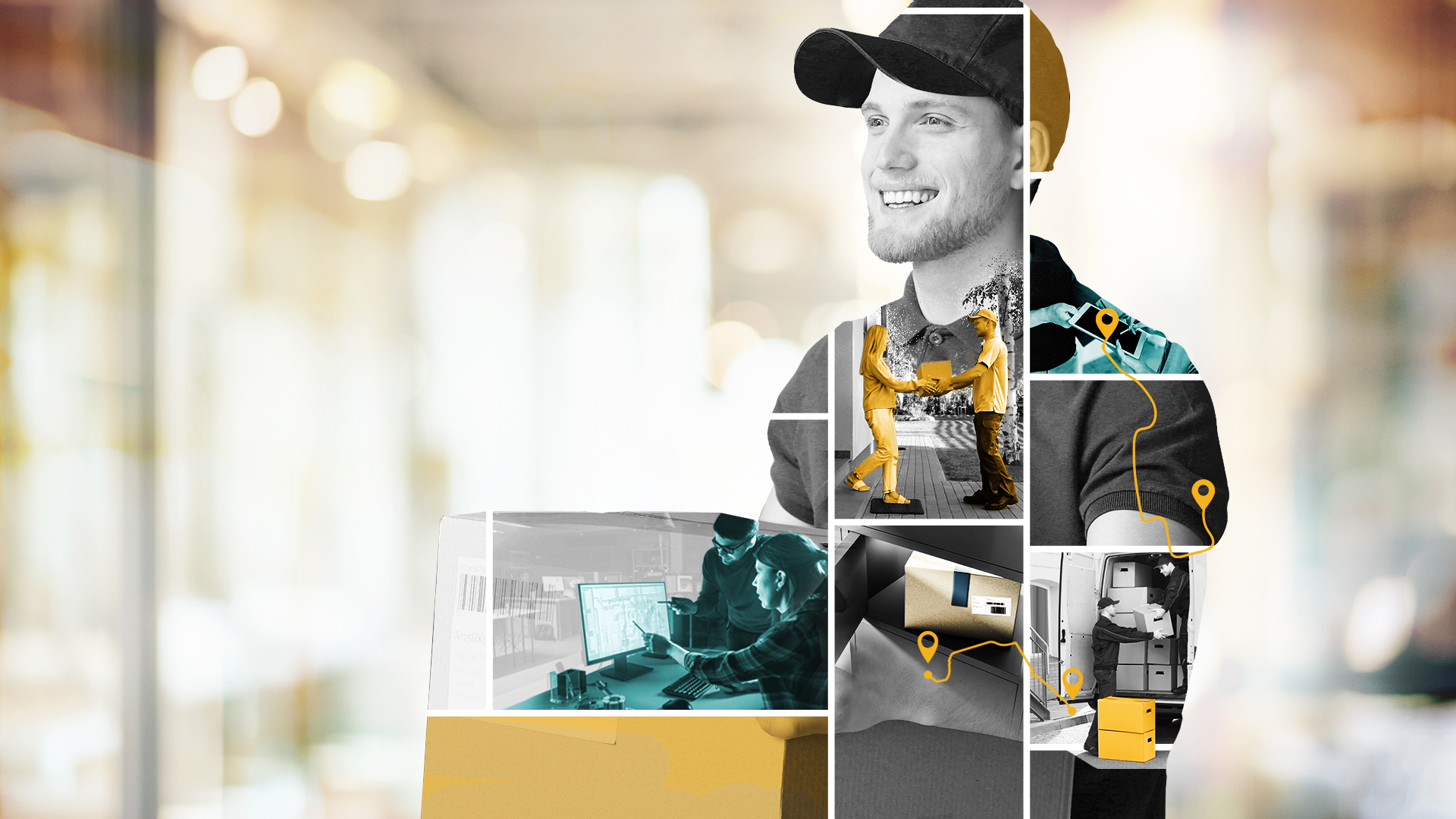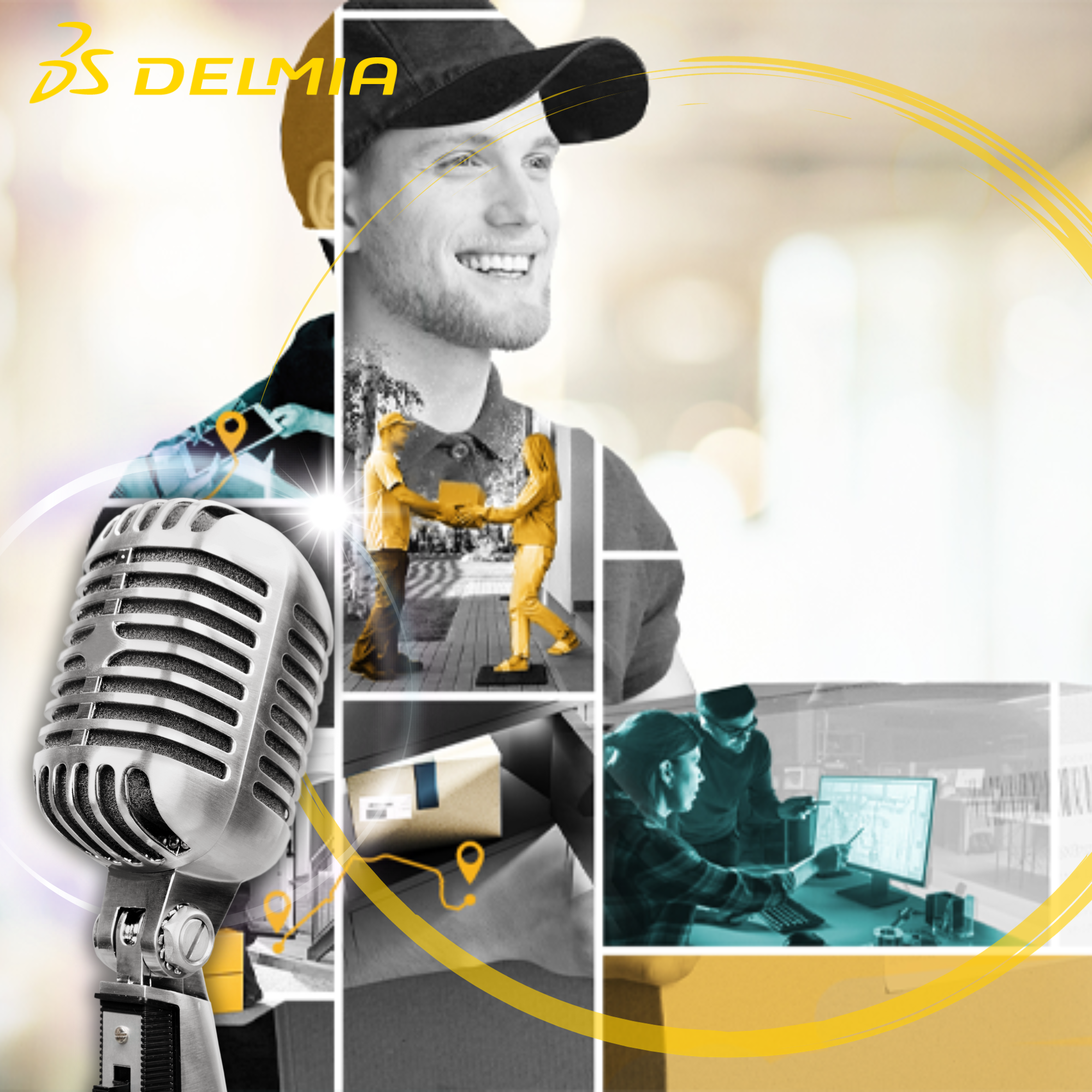Ep: 19 Unpacking the Last Mile Delivery Promise
In this podcast, you'll discover how to optimize last mile logistics with on-time delivery while improving profitability, competitiveness and sustainability. Roel van den Broek, Chief Revenue Officer, The Logic Factory and Thomas Laarz, Logistics Solutions Strategist with Dassault Systèmes discuss in Last Mile Delivery.
Get the full view of your logistics supply chain
Roel van den Broek, Chief Revenue Officer, The Logic Factory and Thomas Laarz, Logistics Solutions Strategist with Dassault Systèmes discuss unpacking the last mile delivery promise.
To optimize their last mile delivery strategy fully, companies need a full view of their logistics supply chain. Technology that provides real-time data insights supports timely decision making to solve unexpected disruptions and meet delivery commitments.
In this podcast, two logistics experts discuss last mile delivery trends, challenges and solutions, helping companies overcome their logistics complexities and achieve consistent success as efficiently as possible. Tune in to uncover the key elements to provide customers with a superior delivery experience without compromising profitability, sustainability, and customer loyalty.
Learn more about Last Mile Delivery here.
Meet Our Speakers
Roel van den Broek
Thomas Laarz
You can follow the DELMIA "Global Operations on the Go" podcast on Apple podcasts, Spotify, YouTube Podcasts, Deezer, by RSS or wherever you get your podcast


![]()


00:00 Therese Snow
Hello, welcome to today's podcast focused on last mile delivery. Specifically, we'll discuss the key elements needed to provide retail and consumer product customers a superior delivery experience without negatively affecting profitability. We call this podcast Delivering on the Promise of Last Mile Delivery. A quick definition of last mile delivery is the transportation of goods from a distribution center or depot to the final destination that can either be a retail establishment or the final consumer.
I'm joined by Roel van den Broek, Chief Revenue Officer, The Logic Factory and Thomas Laarz, Logistics Solutions Strategist with Dassault Systèmes. Roel let me start with you. Your company, The Logic Factory, has been our partner for many years. Tell me how The Logic Factory helps companies with last mile delivery and your role.
00:55 Roel van den Broek
Thanks, Therese. My name is Roel van den Broek and I’m as a Chief Revenue Officer responsible for all commercial and partner activities for The Logic Factory. I started working with DELMIA 20 years ago after my study in artificial intelligence and the fun of solving a complex puzzle has never left me. The Logic Factory is a certified Dassault Systèmes DELMIA partner since 2008. And we're active in various markets such as logistics and retail, energy, agriculture and metals and the aviation and public transport. The Logic Factory helps local and global postal express companies in improving their bottom line, for example, by solving the last mile delivery puzzle by implementing DELMIA and to make it actually work in their business.
01:38 Therese Snow
Thomas, you've worked in the consumer products industry and in the last few years business services. Can you share some highlights of your background?
01:47 Thomas Laarz
Yes, of course. Thank you, Therese. I started at the largest IT retailer in the 90s, managing retail operations in several countries, which included their logistics and materials supply for their own retail stores and the PC production. Since 2017, I'm now with Dassault Systèmes, developing the CPGR and retail accounts, mainly in Germany, I was working with some of the major retailers on that area of outbound logistics based on Dassault Systèmes DELMIA solutions. Since last December, I moved into a global role as strategy expert in the business service industry, where we focus on logistics, where we translate the challenges of logistics markets into solutions leveraging Dassault Systèmes technology.
02:33 Therese Snow
Excellent. Thomas, can you share how growth of e-commerce added to the challenges companies are already facing?
The Large Increase in the Volume of e-Commerce
02:42 Thomas Laarz
Of course, now that there has been a large increase in the volume of e-commerce in the last years. Take e-commerce penetration in the US as an example. 10 years worth of growth took place within three months when the pandemic broke out. The last 18 months accelerated the trend and became what we see today as the race to the consumer. The growth in e-commerce drives customer expectations to a perfect service. Urban consumers have now such a wide choice of products from which they are able to choose with fast deliveries in mind.
They want products in a certain way and they want them in a certain time. So, there is I want it when I want it mentality. The objective for last mile delivery companies is the maximum customer satisfaction and retention here with the ultimate, ultimate objective to have a happy customer by providing an efficient delivery.
03:33 Roel van den Broek
Yeah, and let me add to what Thomas is saying. Technology is the key to staying ahead of the of the growth. Forecast projects an additional 1 billion people to be on the planet by 2030, 60% of those living in an urban area and a significant portion of them in today's emerging markets. And those emerging markets will be growing and they will have access to the internet via smartphones. And that's what making our role so rewarding. We help customers solve last mile logistics problems, which help their business thrive and gives the end consumer a better experience. And to emphasize, last mile delivery problems are also a big topic in retail and consumer goods with dedicated home delivery networks. And we expect that there's also a space where tech companies will expand more and more.
04:19 Therese Snow
Sure, as logistics providers struggling to deal with increasing volumes for e-commerce orders and people continue to expect fast delivery times, are last mile delivery systems where the most bottlenecks occur?
How COVID Affected the Growth Volume
04:34 Thomas Laarz
Last mile delivery systems are not necessarily the bottleneck but remain the most costly part of the entire delivery chain. In the last mile segment, postal express delivery providers, and as well in the retail companies, have to cope with a significant growth of volume, which has accelerated since the outbreak of COVID-19. To balance costs and service levels is here the challenge, plus ensuring the availability of resources to move and handle all these goods. In particular, postal companies saw already the trend for a while and understand that they had to anticipate the decrease of the letter business and the increase of parcels due to e-commerce. They are in full disruption to accommodate with the new reality of e-commerce purchasing.
05:16 Therese Snow
Wow. So, we know that there has been a major shift to e-commerce over the past few years with an acceleration during the pandemic. What changes has industry made to adjust in the short term?
Long-term Structural Improvement
05:29 Roel van den Broek
So, a good question, Therese. So, in the short term, all companies in this space actually fall back to the classical approaches, hiring more vans, using more external resources, adding more drivers, implementing and building a depot, getting more warehouses. And those are actually only temporary measures to cover the immediate stress on the system. Because after the short term fixes, it's time to look at improvements such as smart software using mathematical optimization, and machine learning algorithms. Though these will be a significant aspect of a company's long-term structural improvement, making these adjustments have been the case for many companies for some time now. And with the current stress on the last mile delivery systems, the urgency has just increased.
06:16 Thomas Laarz
I agree with Roel. Many last companies in cities are experimenting with new ideas. New ideas, we have seen, for example, how parcels are shipped for fine granulated distribution to accommodate challenges and accessibility within cities where flexible hubs are placed in urban centers and delivery’s happening, for example, as well by cargo bike. Other new trends we see is the platformization of flexible transport resources. On the long term, old postal express companies adjust the network and analyze how to get closer to the consumer by installing new hubs or distribution centers, even in the middle of cities.
06:52 Therese Snow
Is there a particular area, or areas, companies should focus on that would provide more return on their time and investment?
Looking at the Ecosystem
07:01 Roel van den Broek
Looking at where postal and express companies and retail companies are working, you should also look at their whole ecosystem. From the fully automated stations and depots, the reducing of the CO2 footprint beyond the obvious by using different modes of transportations, drones, bikes, and the different modes of delivery. But it starts, in my humble opinion, by tackling the last mile delivery process, as this is where the most gains can be made by using the right solution.
07:29 Therese Snow
Longer term, do you anticipate new rules and policies to reducing environmental impact of last mile delivery coming from urban city planners and other government agencies? What are ways companies can meet last mile delivery promises?
07:47 Thomas Laarz
For cities where e-commerce has got mature, it's already a significant challenge. Society expectations have to meet customer expectation and balancing the potential implication of this shift, such as environmental and social impact on the agenda, is on the agenda of all actors in this field. In Australia, Singapore, Malaysia and Europe, collection points were gaining acceptance as an alternative to home delivery amongst consumers, retailers and logistics carriers. In Singapore, for example, the government has taken the proactive approach in developing this sector, and has recently announced its plan to set up 2000 parcel locker points across the nation. Every locker point will be accessible within five minutes of walking distance. So, pick-up drop-off locations are growing in many regions.
08:32 Therese Snow
Companies know they must strike a balance to navigate the implications of population growth, shifts in consumer behavior, the impact of the environment and quality of life when solving last mile delivery challenges. What innovative ways can companies meet their sustainability plans while still providing a great customer experience?
Dealing with the Shift in Vehicle Usage
08:54 Thomas Laarz
On first-hand, we see companies will shift to using e-vehicles, smaller delivery vehicles, drones, where remote locations will be delivered. Mobility concepts for greener inner cities, last mile evaluation and implementation. Other examples are projects like cargo Souter in Switzerland, or the neon projects in Saudi Arabia. And there are more, in either existing cities or entirely new planned cities with the objective to create more sustainable transport in and out of the cities. Traffic problems are imminent in cities, goods transport make a large part of the volume of traffic in metropolitan areas.
Setting up a city logistics system with environmentally friendly vehicles for the efficient micro distribution of transported goods into smart cities of the future. This relieves the load on cities by up to 30% of the delivery traffic and 50% of noise emissions. In such systems, the goods are already bundled in the tunnel. This means that the subsequent micro distribution is prepared in advance. Deliveries to sales outlets and end consumers from the hub are fully coordinated, rather than each supplier delivering their full goods individually.
10:05 Therese Snow
So, what role does AI play in optimizing the supply chain to meet last mile delivery commitments?
10:12 Roel van den Broek
With last mile delivery solution in place, you can start communicating, for example, proactive to customers, the expected time of arrival. And by connecting the feedback from the drivers, the customers or any available source back into your applications, you can actually start improving the last mile delivery solution, you can start using machine learning algorithms, building a learning system, and that allows organizations to actually change the parameters and drive the outcome of the application. And I'm aware that this sounds almost as too good to be true. But let's be realistic. This is where we are heading to. And in a few years, this will be the standard in the industry.
10:50 Therese Snow
What results do companies see when they implement a platform approach to solving last mile delivery logistics challenges?
Getting the Most Value of Last Mile Delivery
10:57 Thomas Laarz
There's value from several perspectives. First of all, the reduction of mileage for the fleet, which will lead to cost saving, resource optimization, lower fuel consumption, and finally we'll reduce the CO2 footprint. And this is, by the way, on the agenda of all delivery companies. Second, the well-being of the workforce, such as drivers or workers at the warehouses or hubs, represents value. Supporting the available workforce by technology based solutions, either based on IT or physical support, and balancing the workload of the drivers will improve the productivity and loyalty of qualified people. Third, customers need to be retained, providing the best possible customer service by predicting reliable delivery windows, status of the whereabouts of the deliveries, managing possible disruptions well, creating transparency and visibility will increase the customer trust and confidence.
The Top 3 Reasons for Choosing Dassault Systemes
11:56 Therese Snow
What are the top three reasons that companies would choose a last mile delivery solution from Dassault Systèmes?
12:03 Thomas Laarz
Well, if the year 2020 taught us anything, it's the importance of building a more sustainable resilient world. As a purpose driven company, Dassault Systèmes can be a significant lever for sustainable innovation to meet current challenges. To create a better world, we must propose solutions to explore the realm of the possible and to imagine the future, and it's not just the use of methods of yesterday or today. Our handprint is essential and if we are digital transformation enabler, with the experience and best practices across many customers and projects in 11 industries, we are critical for energy transition thanks to our ability to manage the end-to-end processes in a digital continuity. When it comes to the postal and express and retail world, we enable these customers to create the virtual twin of the entire operations to plan visualize, optimize, operate and maintain.
12:56 Roel van den Broek
So first of all, on a high level, the last mile delivery process is similar for all postal and express and retail companies. However, when digging deeper, you will find that a large part of the costs are driven by local laws and union regulations. And you need to model these exact rules to make sure that you get the value out of the solution. Second is the mathematics, many companies have their last mile delivery puzzle solved by the drivers during the day, or planners using basic solutions on a quarterly or yearly basis. And while they all do decent jobs, mathematics as smart software can do these kinds of things faster and better, with the modern knowledge of the drivers and the planners together, it's an unbeatable combination.
13:39 Therese Snow
Listeners, for more information on this topic, including bonus material from this podcast, that includes a transcript with a case study and summary, go to the link listed in this podcast.



